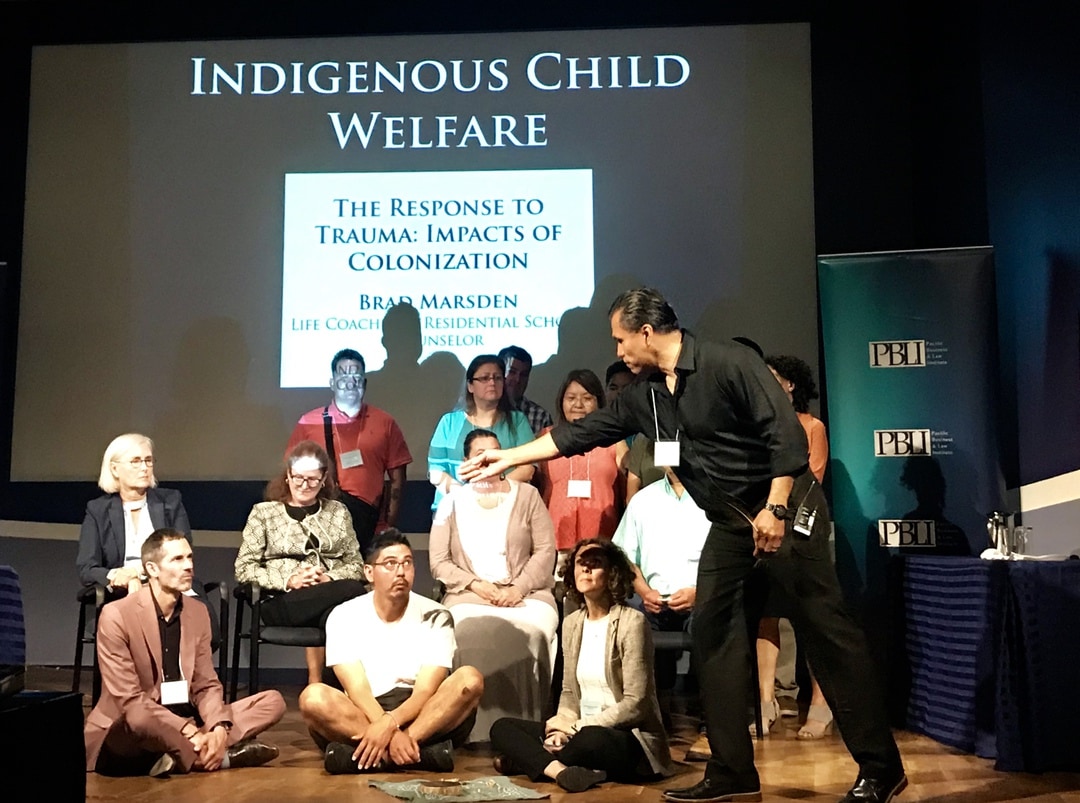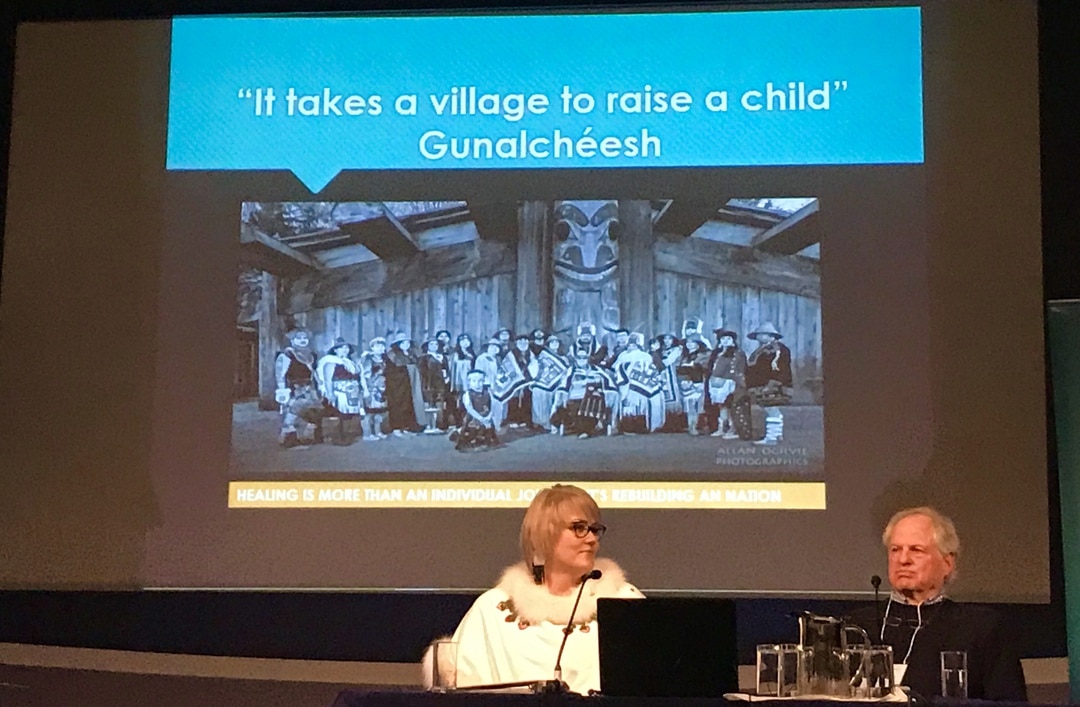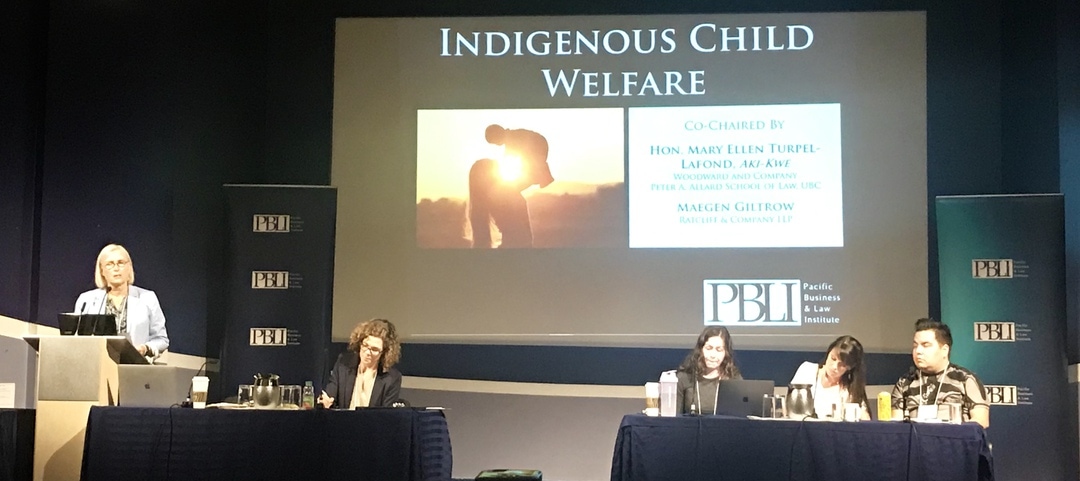At a conference I attended last week, when Andrea Lyall asked a room full of foresters what reconciliation meant to them, one former chief said, “The wall that surrounds our Indigenous communities is like the wall that was between East and West Germany. The only way that wall came down was people from both sides worked to bring it down.”
This is the theme that was consistent at all three conferences I attended last week: people working from both sides of a wall to bring it down.
Conference #1: BC Green Convention
First, the BC Green Convention – our largest yet, with much to celebrate, and much to look forward to. The focus on youth and leading together resonated with the hundreds who attended, and it was particularly wonderful to hear the perspectives of the youth who attended – their valuable input included:
Make politics more accessible.
Inspire and encourage youth the engage and run for office.
Focus on collective decision-making and community cooperation.
Each year, the convention feels like a family reunion – a coming together of the founders and newcomers of the party, reflecting on our accomplishments and looking to the work ahead to help build a more equitable, just, resilient, sustainable province.
Conference #2: Indigenous Child Welfare Conference
From New Westminster I travelled to downtown Vancouver to attend the Indigenous Child Welfare Conference, hosted by the Pacific Business and Law Institutes. Co-chairs of the conference were Mary Ellen Turpel–Lafond and Maegen Giltrow, two extraordinary women who are champions for the rights and wellbeing of Indigenous families, children, and communities.
It is rare to attend a conference in which every single session is densely packed with valuable information and insights, and is highly moving and inspiring. We heard the personal stories of youth who have been in the child welfare system, the challenges and traumas they experienced, and their triumphs. Dawn Johnson’s story was a harrowing tale of growing up in circumstances most of us can’t even imagine, and it was a highlight to join everyone in the room to applaud her latest achievement of recently graduating from UBC Law School.
On the first day, Brad Marsden recreated an Indigenous village, with culture and children at the centre, surrounded by elders, mothers, and fathers – and then led us through the dismantling of that village as the waves of colonialism passed over: small pox, residential school, 60s scoop, the child welfare system. Over the course of an hour, Brad broke down and dismantled the stereotypes that have emerged, and demonstrated the central role culture is playing in restoring health and wellbeing after the impacts of trauma on so many generations.
Later, Ashley Carvill of the Carcross Tagish First Nation, and Judge Barry Stuart sat next to each other to share the story of how the nation has reclaimed jurisdiction over child welfare, which is embodied in living legislation that starts with the traditions and stories of the Nation – traditions and stories that are taught to children in preschool. Barry spoke of how his work with the Carcross Tagish Nation – of learning how to be and work in a circle – has transformed him as a human, and his humility and gratitude were palpable.
Working together to take down the wall.
In another example of working together, Associate Chief Judge Susan Wishart sat with Judge and former Lieutenant Governor of BC Steven Point to share their work, on and off the bench, in changing the story of how the judicial system operates vis-à-vis Indigenous families. “There’s definitely room within the current system to do things better,” said Justice Wishart, and then she told us about the pilot project in New Westminster where elders are part of the family case conferences, and where healing plans are helping to keep families together.
Judge Steven Point told us that there has been a declaration made by the Sto:lo Nation: “The Matriarchs are taking authority over the children in the tribe.” This was a theme that emerged over and over: Indigenous peoples and Nations have inherent laws, traditions, and rights – and they are no longer going to ask permission of the crown to exert them.
On the second day, we heard from directly from Dawn Johnson, Chris Tait, and Raven McCallum – Indigenous youth who had grown up in care. What was consistent was the extraordinary resilience of these three. It was also notable that in each of their lives, one compassionate ally had made an incredible difference.
Someone had worked with these youth to take down the wall.
The final two sessions were stories of how a First Nation had navigated the legal and jurisdictional realms to successfully assert their inherent rights. Chief Wayne Christian of the Splatsin Band and lawyer Louise Mandell shared the story of working together for 40 years to ensure that the community – and the Splatsin matriarchs – are the people who make decisions related to the well-being of children and families.
Finally, Christy Black of the Huu-ay-aht First Nation presented with Maegen Giltrow, a laywer with Ratcliff & Company, about the work that’s been done by the Huu-ay-aht to build a strong, healthy community in which families are supported. Then Maegan shared the story of LS and Huu-ay-aht First Nation vs Director of Child and Family Services – a case that Maegen took to the BC Supreme Court in order to have a mother reunited with her newborn baby in order to maintain the maternal bond and the ability to breastfeed. This case garnered a great deal of attention, and was an indication of what was possible because the Huu-ay-aht Nation had done the foundational work.
In light of the recently released report on Missing and Murdered Indigenous Women and Girls, we all must feel the urgency to do better for Indigenous children, mothers, families, and communities.
Conference #3: Community Forest Conference
After two days in Vancouver, I made my way to Mission for the Community Forestry Conference. I had expected a significant change of themes and topics, but I was surprised to find the themes being discussed were the same: reconciliation, Indigenous rights, resiliency, and how to work cooperatively and collaboratively so that outcomes can improve for everyone.
It was surprising and wonderful to see the conversation on forestry rooted in the work of reconciliation and co-governance, and to hear discussions about “community-up approaches to ethical practices” and the successful models of this happening across BC, including in Cowichan Valley with the Khowutzun Forest Services.
Over and over again it was reinforced that the path forward is for all of us on both sides of the wall that has historically separated Indigenous and non-Indigenous peoples in Canada is to work together to bring that wall down.
As Brad Marsden said at the end of his presentation, the story of Indigenous peoples in Canada is one of resilience, perseverance, strength, and endurance. Let’s continue to write the next chapter of that story – the chapter in which we come together to bring down the wall, and move forward recognizing that there is an extraordinary future that we can create together that doesn’t involve marginalization, discrimination, or racism.
That’s the new story of Canada that I’m excited to be a part of creating.








